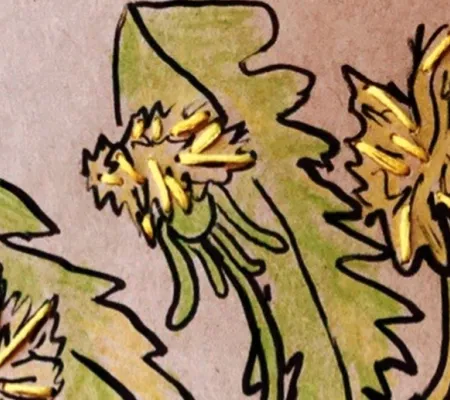As we adjust to new realities, we cannot help but feel the strain and stress of uncertainty, isolation and possibly the grief of losing friends and loved ones. And yet, far from unprecedented, our behavior is simply a reflection of the realities of our world and the experience we are going through.
Mental health and disaster researchers warn that there is a looming crisis of mental health once we return from shutdown. We are all enduring a collective trauma and while traumas, as a term, range in severity, duration and responses; the trauma we experience associated with COVID-19 will be global in scale. Luckily, there are ways to heal from trauma, even in its midst.
Resilience theory and the principles of trauma-informed education point to some of the protective factors that can be cultivated to foster resilience. Trauma is a complex problem that requires a systemic effort, but art educators have a unique set of tools with which to meet its needs. We spoke with UT Art Education Associate Professor Donalyn Heise who has over 30 years of experience in K-12 public and private arts education. Her research focuses on the transformative power of art and its ability to foster resilience in diverse populations. “Art is used to help students reframe adversity to see possibility instead of despair,” said Heise. She teaches her pre-service art education students to focus on the protective factors of resilience when addressing trauma.
So, what can we do to build resilience right now during the COVID-19 outbreak? Here are tips from Heise:
Focus on Flexibility
When your reality is defined by instability and uncertainty during the pandemic, it’s time to lean hard into flexibility. Being gentle with yourself and your expectations is paramount now more than ever. Making art teaches us to hold multiple perspectives and interpretations of the work we do, while still pursuing a clear personal vision.
Have a Laugh
It’s hard to imagine experiencing joy right now. So much so that sometimes the unexpected occurrence of joy sparks guilt or shame. But living in a constant state of anxiety is unsustainable and debilitating. Nurturing a sense of humor and ability to find joy in silly, daily things offers respite and builds the ability to bounce back from adversity. Dada artists famously responded to the horrors of WWI with a deep sense of satire and absurdist humor. So maybe go ahead and create a hyper niche meme that makes you giggle.
Together While We Are Apart
Contributing to the wellbeing of another person builds a sense of connectedness with the world around you and combats feelings of helplessness. Community art projects based in the collection of oral histories and lived experiences of specific populations offers one idea of how to affect change even from isolation. You can reach out by phone, email, or video conference to gather stories from elder relatives who feel most isolated, find ways to interpret or chronicle their stories and experiences. The activity has been known to strengthen cross-generational ties and strengthen empathy for yourself and others.
Building Mastery
Mastery of technique is not about innate talent. It’s about persisting through setbacks and confusion. What we need now is to build the ability to withstand setbacks great and small with an eye towards the rewards that come by sticking with it. Practice, practice, practice!
Carving a Vision of the Future
Isolation and precarity are overwhelming, but creative imagination can offer release. Envisioning images of safety, warmth and care or futuristic, hybrid realities unlike anything on Earth, and committing them to pen, paper, paint, ink, etc., is an act of nurture that encourages personal expression and processing of emotion. Developing a positive outlook is vital to recovery and even fantastical doodles can suggest alternative ways to view the world and its possibilities.
Limited Resources Means More Innovation
If the world feels like it’s contracting around you, it’s time to make a list. Don’t focus on the things that you are losing, instead compile a list of the things you still have to be grateful for—the people you can turn to, people who inspire you, places that you love, and the things that bring you even small moments of joy and wonder. Find ways to illustrate this list with what you have on hand. It’s a surprisingly effective coping strategy and an example of when imposed limits offer new outlets for expression.
Meaning-making
Finding a sense of purpose in whatever you do right now is going to be critical. You have limited energy to expend, so choose activities that bring you meaning. You may not be in control of your circumstances right now, but you can control how you react to those circumstances. You can choose to submerge yourself in your creative potential, take risks in a creative environment and explore parts of your identity and world around you through the act of meaning-making through art. Whether it’s learning how to paint, taking photographs during your daily walks, or creating work alongside your family members; art-making offers moments of productive creation.


